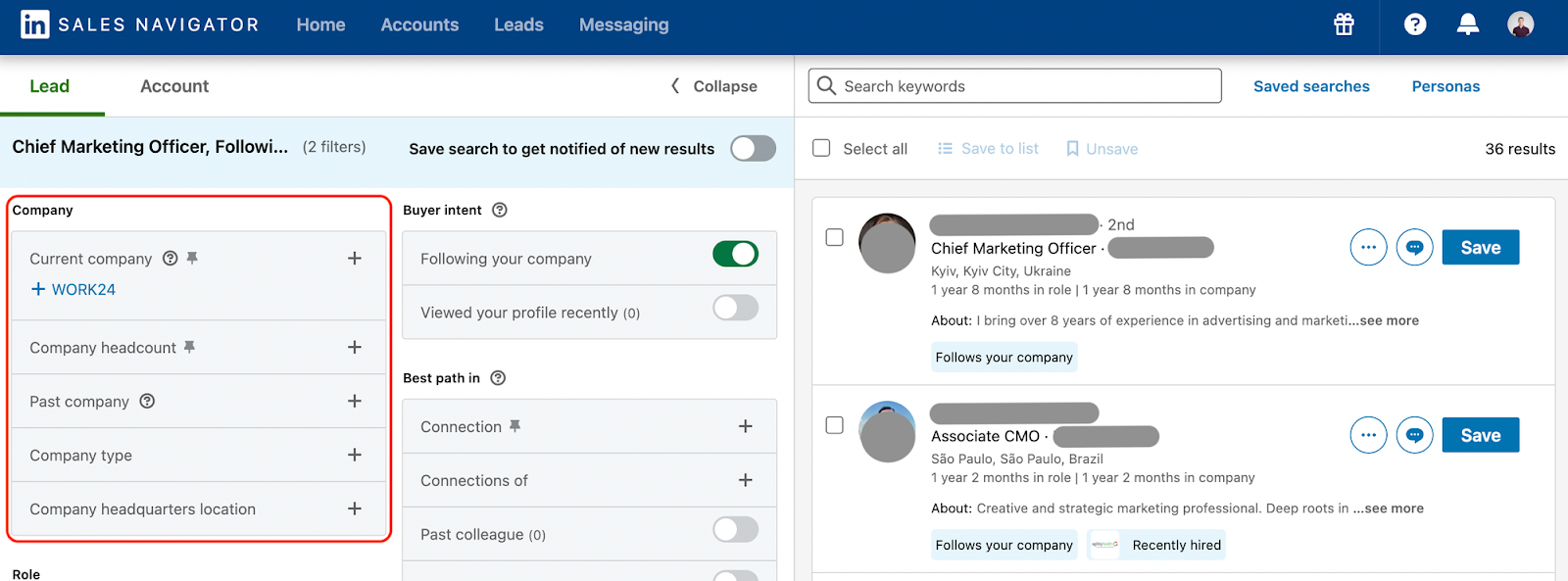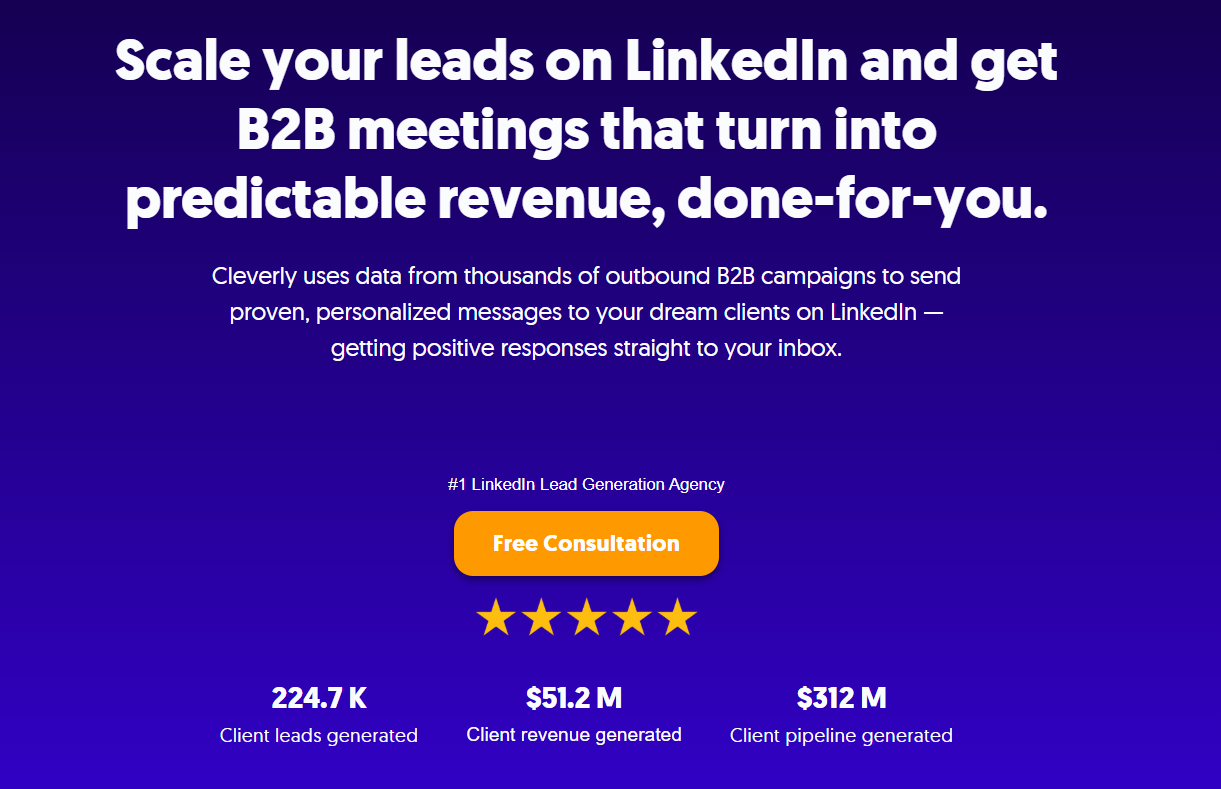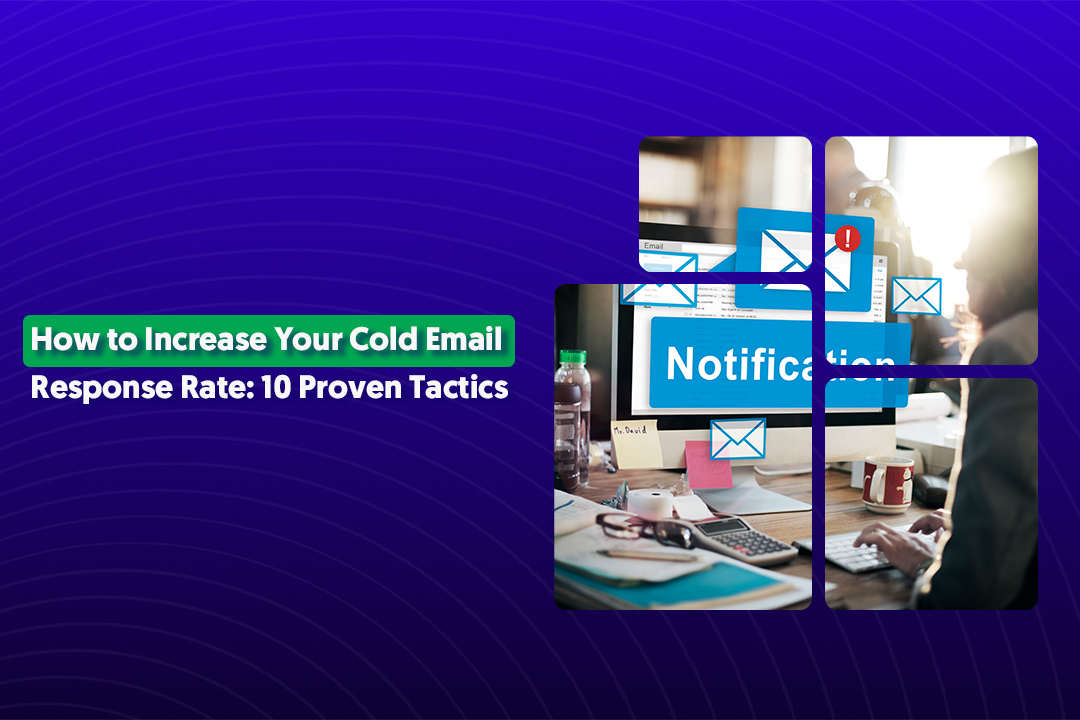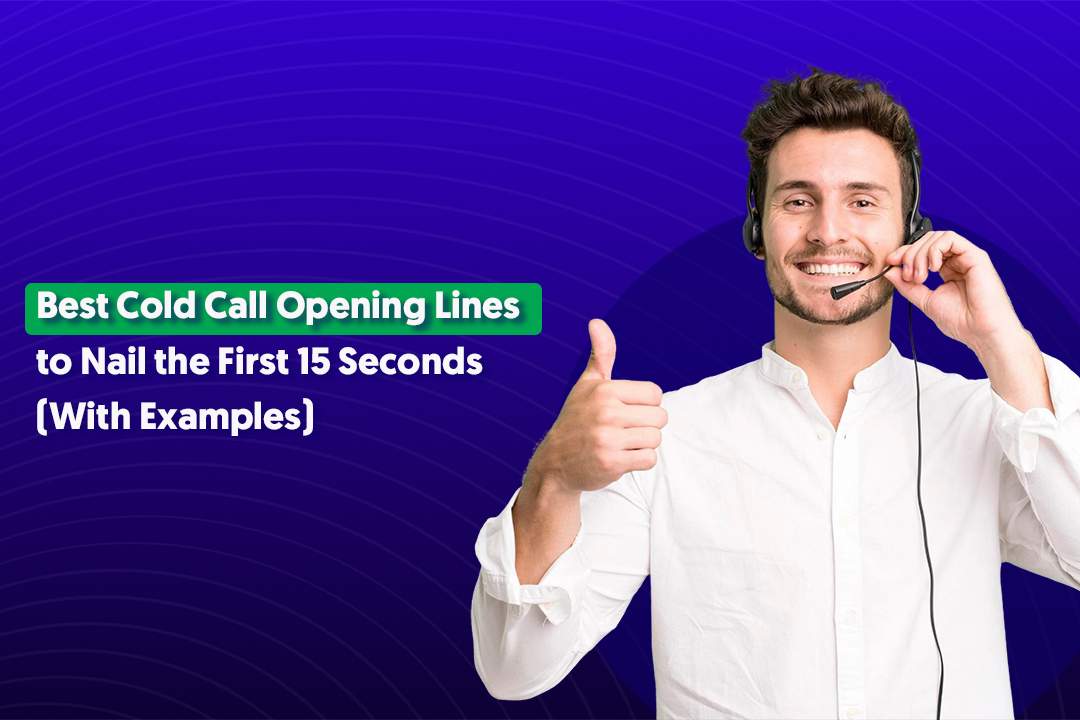Table of Content
Key Takeaways
- Your LinkedIn Social Selling Index scores you 0–100 on how well you build relationships and drive sales visibility on LinkedIn.
- Check your score at linkedin.com/sales/ssi and track it monthly to spot patterns and measure what's actually working.
- Focus on the four pillars: establish your brand, find the right people, engage with insights, and build real relationships.
- A score above 65 puts you ahead of most professionals—but the score alone doesn't close deals, your follow-through does.
- Avoid common mistakes like incomplete profiles, spammy outreach, and ignoring comments—they silently tank your score.
- Consistent daily activity beats sporadic effort every time—small actions compound into big SSI gains over 30–60 days.
Your LinkedIn profile might be getting views, but is it actually driving sales? That's exactly what your LinkedIn Social Selling Index tells you.
Think of it as your personal sales effectiveness score on LinkedIn, a number between 0 and 100 that shows how well you're building relationships, finding the right people, and engaging with insights that matter.
Most people don't even know this score exists, let alone how to improve it.
But if you're serious about generating leads on LinkedIn, your LinkedIn Social Selling Index score is one metric you can't afford to ignore.
We've worked with thousands of sales teams who've cracked the code on LinkedIn social selling—and in this guide, we're breaking down exactly how to check your score, what it means, and the proven strategies to grow it in 2025.
Let's dive in.
What Is the LinkedIn Social Selling Index (SSI)?
Your LinkedIn Social Selling Index score is basically LinkedIn's way of grading how well you're using the platform to build relationships and drive business.
It's a number between 0 and 100 that updates daily based on your activity and engagement. Think of it like a credit score for your sales presence on LinkedIn.
The higher your social selling index score LinkedIn gives you, the more likely you are to show up in searches, get profile views, and actually convert connections into conversations.
LinkedIn social selling index is built on four core pillars. Let's break down each one:

1. Establish Your Professional Brand
This pillar measures how complete and credible your profile looks. LinkedIn wants to see that you're a real person worth connecting with, not just another faceless sales account.
Here's what moves the needle:
- Complete your entire profile: We're talking LinkedIn headline, banner image, About section, work experience, and featured posts. A half-finished profile tanks your score before you even start.
- Publish thought leadership regularly: Share insights, case studies, or quick takes on industry trends. You don't need to write essays—even short posts that add value count.
- Jump into industry discussions: Comment on posts from leaders in your space. Show up where your audience already hangs out.
LinkedIn rewards regular activity over sporadic bursts of content.
2. Find the Right People
This pillar tracks how well you're identifying and connecting with decision-makers who actually matter to your business.
Smart targeting looks like this:
- Use advanced filters or Sales Navigator: Don't just search random job titles. Layer on company size, industry, geography, and seniority to find your ideal prospects.
- Boolean search for laser-focused results: Combine keywords with AND, OR, and NOT operators to filter out noise and surface exactly who you need.
- Engage before you pitch: Like their posts, comment thoughtfully, and build familiarity before sending that connection request. LinkedIn outreach works better when you're not a complete stranger.
Bottom line: quality beats quantity every time. LinkedIn rewards you for connecting with relevant people, not just racking up random connections.
3. Engage with Insights
This is where most people drop the ball. LinkedIn tracks how often you interact with content that matters—not just scrolling, but actually engaging in meaningful ways.
High-value engagement includes:
- Commenting on trending posts: Don't just drop a "Great post!" Comment with something specific that adds to the conversation or offers a different perspective.
- Sharing case studies and results: Real examples and data get way more traction than generic advice.
- Tagging thought leaders strategically: When it makes sense, bring relevant people into the conversation. Just don't overdo it.
Pro tip: Use ChatGPT to help draft personalized comments that show you actually read the post and have something valuable to add. It saves time while keeping your engagement authentic.
4. Build Strong Relationships
The final pillar measures how well you're nurturing connections over time. Spoiler: it's not about sending the same copy-paste message to 100 people.
Relationship-building that works:
- Send personalized outreach consistently: Reference something specific about their profile, recent post, or company news. Show them you did your homework.
- Follow up with value, not pressure: Your second message shouldn't be "Just checking in..." Share a relevant article, intro, or insight that actually helps them.
- Join industry-specific LinkedIn Groups: This is where deeper conversations happen. Participate actively and you'll naturally build relationships with the right people.
When you nail all four pillars, your LinkedIn sales social selling index becomes a reliable predictor of your pipeline health. And the best part? Every action you take to improve it also makes you better at actual selling.
How to Check Your LinkedIn SSI Score
Good news—checking your social selling index on LinkedIn takes about 30 seconds. No complicated setup, no hidden menus. Here's exactly what to do:
- Step 1: Go directly to linkedin.com/sales/ssi
- Step 2: Log in with your regular LinkedIn account
That's it. LinkedIn will pull up your SSI dashboard automatically.
Quick note: If you're using Sales Navigator, you'll get access to more detailed breakdowns and comparison data. But even free LinkedIn accounts can see the core numbers.
What You'll See on Your SSI Dashboard
Once you're in, LinkedIn shows you a clean breakdown of your performance:
- Your overall SSI score (0-100): This is your headline number. It's the average of your four pillar scores combined.
- Individual scores for each pillar: You'll see exactly where you're strong and where you're leaking points. Maybe your personal brand is solid but your engagement is weak—this is where you find out.
- Industry rank: LinkedIn compares you to other people in your field. If you're in the top 10% of your industry, you're doing something right.
- Network rank: This shows how you stack up against your direct connections. It's a smaller comparison group but still helpful for competitive benchmarking.

Track Your Progress Over Time
Here's what we tell every sales team we work with: take a screenshot of your SSI dashboard on the same day every month. Drop it in a folder or Google Doc.
Why? Because your LinkedIn social selling index fluctuates based on recent activity. You might spike after a busy week of outreach, then dip when you take your foot off the gas.
Monthly tracking helps you spot patterns, see what's actually working, and catch drops before they hurt your pipeline.
If your score hasn't moved in 60 days, it's time to change your strategy. If it's climbing steadily, double down on whatever you're doing.
What Is a Good SSI Score? (With Benchmarks)
So you've checked your social selling index score LinkedIn gave you. Now what? Is 45 good? Is 65 great? Let's break down what the numbers actually mean.

0–24: Low Engagement
You're barely active on LinkedIn. Your profile might be incomplete, you're not connecting with relevant people, and engagement is pretty much nonexistent. If you're in this range, there's a lot of low-hanging fruit to grab.
25–49: Developing Personal Brand
You're showing up, but inconsistently. Maybe your LinkedIn profile looks good but you're not engaging much. Or you're active but connecting with the wrong people. You're on the radar, but not standing out yet.
50–74: Strong Activity and Growing Influence
Now we're talking. You're posting regularly, engaging with the right content, and building real relationships. People in this range usually see consistent inbound interest and profile views. This is where most serious sales professionals land.
75–100: Top 1% Performer
You're in rare air here. These scores belong to thought leaders, top-performing sales reps, and people who treat LinkedIn like a core part of their strategy—not an afterthought. If you're here, you're likely getting daily opportunities from your LinkedIn presence alone.
👀 Note: A high social selling index score on LinkedIn doesn't automatically mean you're closing deals. What it does mean is that you're visible, credible, and positioned to have the right conversations.
We've seen people with SSI scores in the 80s who barely convert because their LinkedIn outreach messaging is terrible. And we've seen people in the 50s crushing it because they pair solid LinkedIn activity with personalized, value-driven LinkedIn outreach.
The score is your visibility enabler. What you do with that visibility is where the real magic happens.
Check This Out: Linkedin Inmail vs Messages: What Gets You More Leads
How to Improve Your LinkedIn Social Selling Index (SSI) Score
Raising your LinkedIn sales social selling index isn't about gaming the system—it's about showing up consistently and doing the things that actually build relationships.
Here's how to move the needle on each pillar.
Optimize Your Profile for Personal Branding
Your profile is your storefront. If it looks empty or generic, people bounce before they ever read your message.
Quick wins that boost your score:
- Add a banner image that shows what you do: Skip the generic stock photo. Use something that communicates your expertise—whether that's a tagline, client logos, or a simple visual that says "I help [audience] with [problem]."
- Write a keyword-rich headline: Don't waste it on just your job title. Include what you do, who you help, and how. Example: "Helping B2B SaaS companies generate pipeline through personalized LinkedIn outreach | 500+ clients served."
- Feature your best content: Add case studies, podcast appearances, popular posts, or client results to your Featured section. This is prime real estate—use it to prove you know your stuff.
LinkedIn rewards complete profiles. The more sections you fill out thoughtfully, the better your brand pillar score climbs.

Create Consistent, Value-Driven Content
You don't need to be a full-time content creator, but you do need to show up regularly. Posting 2–3 times per week is the sweet spot for most sales professionals.
Content that actually performs:
- Industry myth debunked: Call out bad advice everyone's following. People love a hot take backed by experience.
- Behind the scenes: Share what's working (or not working) in your day-to-day. Authenticity beats polish every time.
- Client success stories: Real results with real numbers. These posts get shared, commented on, and remembered.
Struggling with ideas? Use ChatGPT to brainstorm hooks or outlines. Prompt example: "Give me 5 LinkedIn post ideas for a sales professional targeting SaaS founders, focused on pipeline generation."
The goal isn't virality—it's visibility. Regular posting keeps you top of mind with your network and signals to LinkedIn that you're an active, engaged user.
Engage with High-Value Accounts
This is where most people miss easy points. LinkedIn tracks how strategically you're engaging—not just how often.
High-impact engagement looks like this:
- Comment meaningfully on your ICP's posts: Don't just say "Great post!" Add a perspective, ask a thoughtful question, or share a relevant example.
- Personalize every connection request: Mention something specific—a recent post they shared, a mutual connection, or why you think connecting makes sense.
- Use saved searches in Sales Navigator: Set up alerts for new people who match your ideal customer profile. Engage with their content before you reach out.
LinkedIn's algorithm favors people who engage with relevant accounts in their industry. The more strategic your activity, the higher your engagement pillar score climbs.
Use Sales Navigator Smartly

If you're serious about improving your LinkedIn social selling index score, Sales Navigator is worth the investment. It gives you tools that free LinkedIn just doesn't offer.
How to actually use it:
- Save leads and monitor job changes: When a prospect gets promoted or switches companies, that's your opening. Sales Navigator alerts you automatically.
- Combine Boolean search with advanced filters: Example: Search for "VP Sales" AND "SaaS" NOT "recruiting" + filter by company size and location. You'll surface exactly who you need without wading through irrelevant profiles.
- Engage via InMail insights: Sales Navigator shows you what your prospects are engaging with. Comment on those same posts or share similar content to get on their radar before you send a message.
The platform basically hands you a roadmap of who to talk to and when. Use it.
Insight: Exact LinkedIn Sales Navigator Lead Workflow We Use to Book High-Quality B2B Meetings
Common Mistakes That Lower Your SSI (and How to Fix Them)
Even if you're active on LinkedIn, certain habits can quietly tank your LinkedIn social selling index without you realizing it.
Here are the most common mistakes we see—and how to fix them fast.
Mistake #1: Inactive or Incomplete Profiles
If your profile is missing key sections—headline, About, experience, or featured content—LinkedIn assumes you're not serious about the platform. And it shows in your score.
The fix: Spend 30 minutes filling out every section. Add a professional photo, write a headline that explains what you do, and feature your best posts or case studies. A complete profile is the foundation everything else builds on.

Mistake #2: Posting Irrelevant or Overly Promotional Content
Nobody wants their feed flooded with "Check out our latest feature!" or "We're hiring!" posts.
If everything you share is a thinly veiled sales pitch, people stop engaging—and your LinkedIn social selling index drops.
The fix: Follow the 80/20 rule. 80% of your content should educate, entertain, or add value. 20% can be promotional. Share insights, ask questions, tell stories. Save the hard pitches for DMs, not your feed.
Mistake #3: Ignoring Engagement from Your Audience
Someone comments on your post and you ghost them. That's a missed signal to LinkedIn that you're not interested in building relationships. The algorithm notices when you don't respond.
The fix: Reply to every meaningful comment within 24 hours. Even a quick "Thanks for sharing that perspective!" keeps the conversation going and shows LinkedIn you're engaged. Bonus: it boosts your post's visibility too.

Mistake #4: Sending Mass or Spammy Outreach Messages
We see this all the time: generic connection requests with zero context, or worse—immediate pitches the second someone accepts. It feels robotic, and people can smell automation from a mile away.
The fix: Personalize every message. Reference something specific about their profile, a post they shared, or mutual interests. Make it clear you actually looked at who they are before hitting send.
Learn More: How To Generate 30+ Leads On Linkedin Without Spamming People
How Cleverly Helps Boost Your SSI with Done-for-You LinkedIn Outreach
Here's the thing: growing your LinkedIn social selling index gets you visibility. But visibility without a system to convert it? That's just vanity metrics.
This is where your trusted LinkedIn lead generation agency steps in.

We don't just help you look good on LinkedIn—we turn that presence into a real pipeline. Our done-for-you LinkedIn generation service is built to enhance your SSI while actually filling your calendar with qualified conversations.
Here's how we do it:
- We optimize your profile and brand positioning.
- We build hyper-targeted lead lists.
- We run personalized, multi-step outreach sequences.
- We monitor what matters
The result? A higher SSI score paired with a steady flow of warm leads who actually respond.
We've helped over 10,000 clients—including teams at Amazon, Google, Uber, PayPal, Slack, and Spotify—generate $312 million in pipeline and $51.2 million in closed revenue using this exact approach.
Ready to turn a higher SSI into actual B2B leads? Let's talk.

Conclusion
Your LinkedIn social selling index is a snapshot of how well you're building the kind of presence that turns connections into conversations and conversations into revenue.
The good news? You don't need to be a LinkedIn guru to improve it. You just need to show up consistently, engage strategically, and focus on the four pillars that actually move the score: your brand, your targeting, your engagement, and your relationships.
Check your LinkedIn social selling index today. Track it monthly. Adjust what's not working. Double down on what is.
And if you want to skip the trial-and-error and go straight to a system that works, we've built one that's generated over $312 million in pipeline for companies just like yours.
Your next big opportunity is probably already on LinkedIn. The question is: are you visible enough for them to find you?
Frequently Asked Questions





